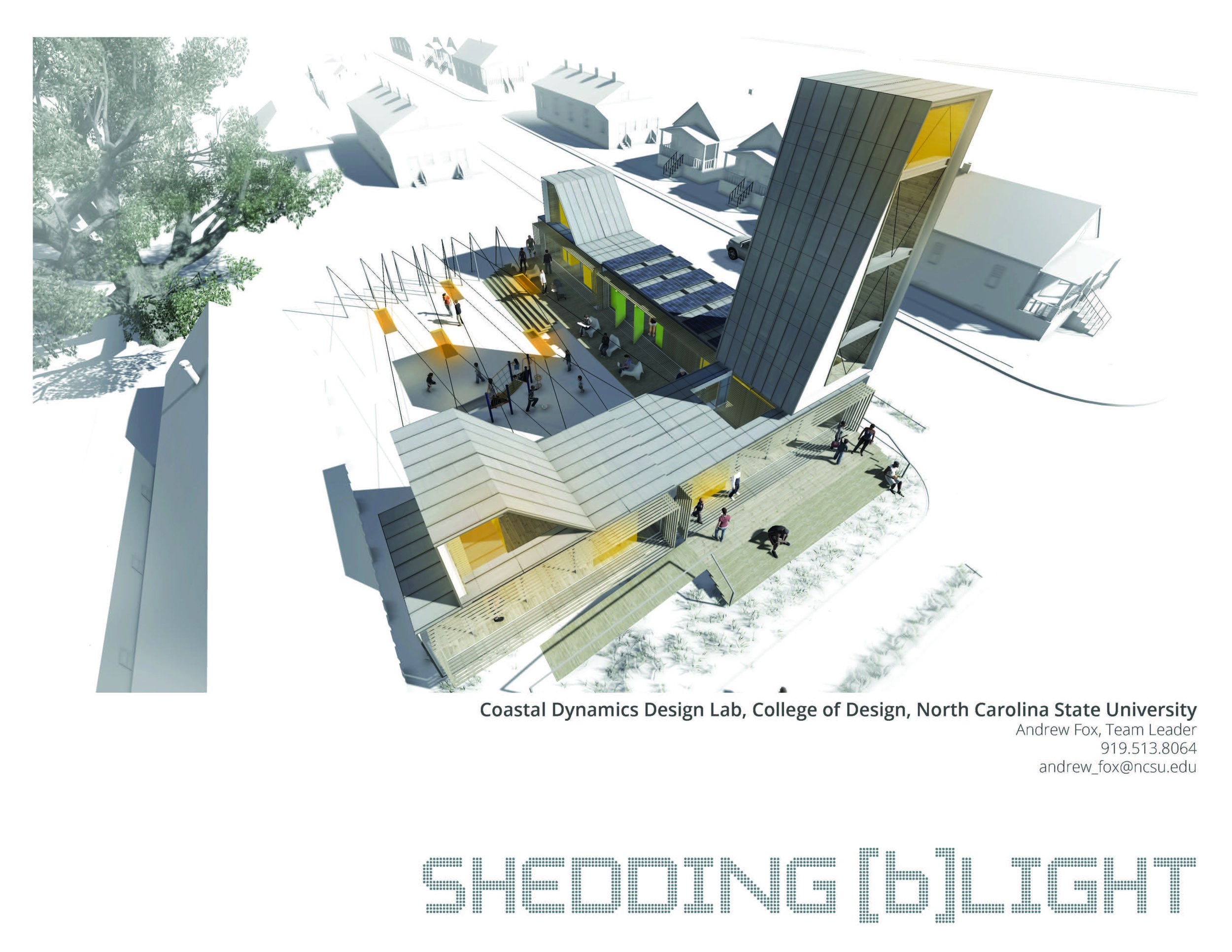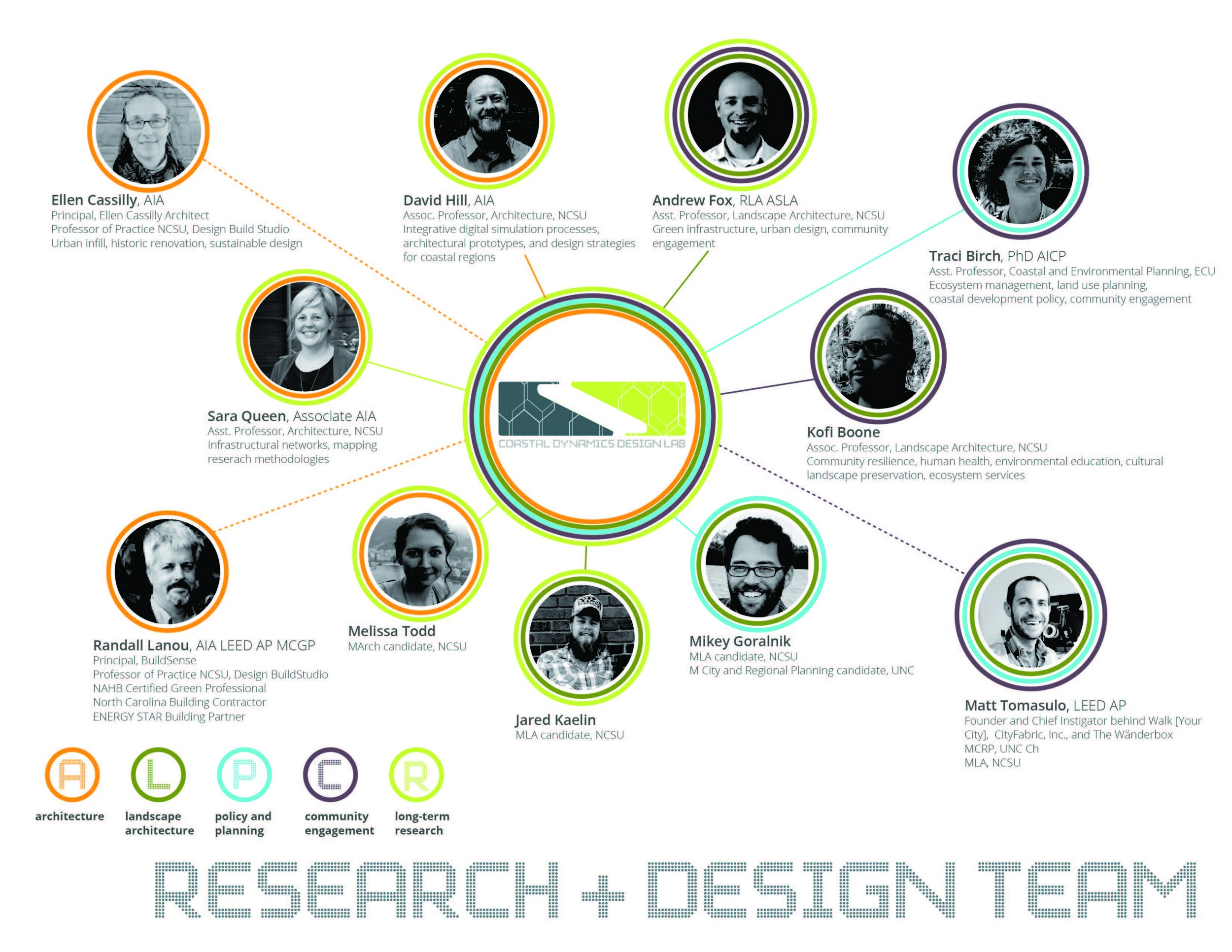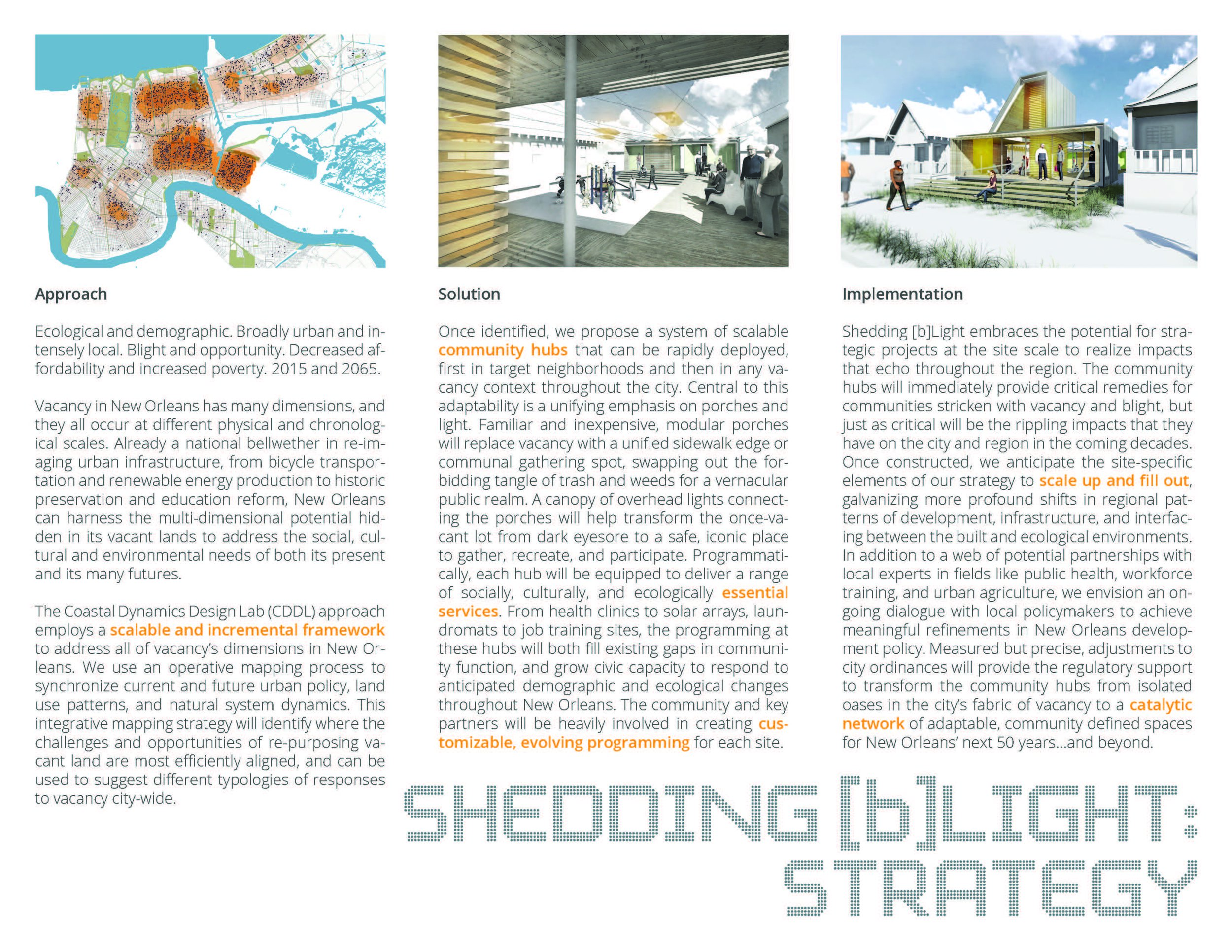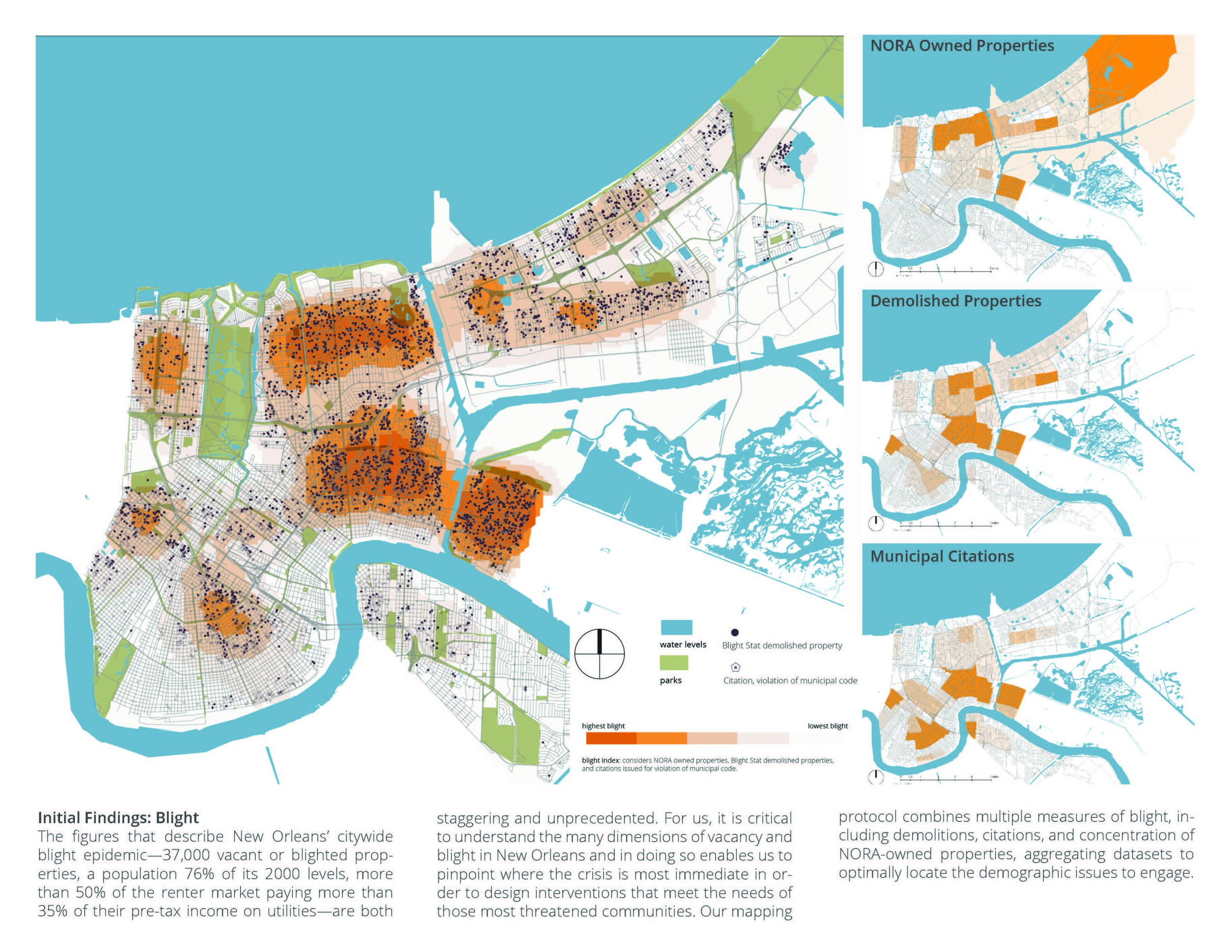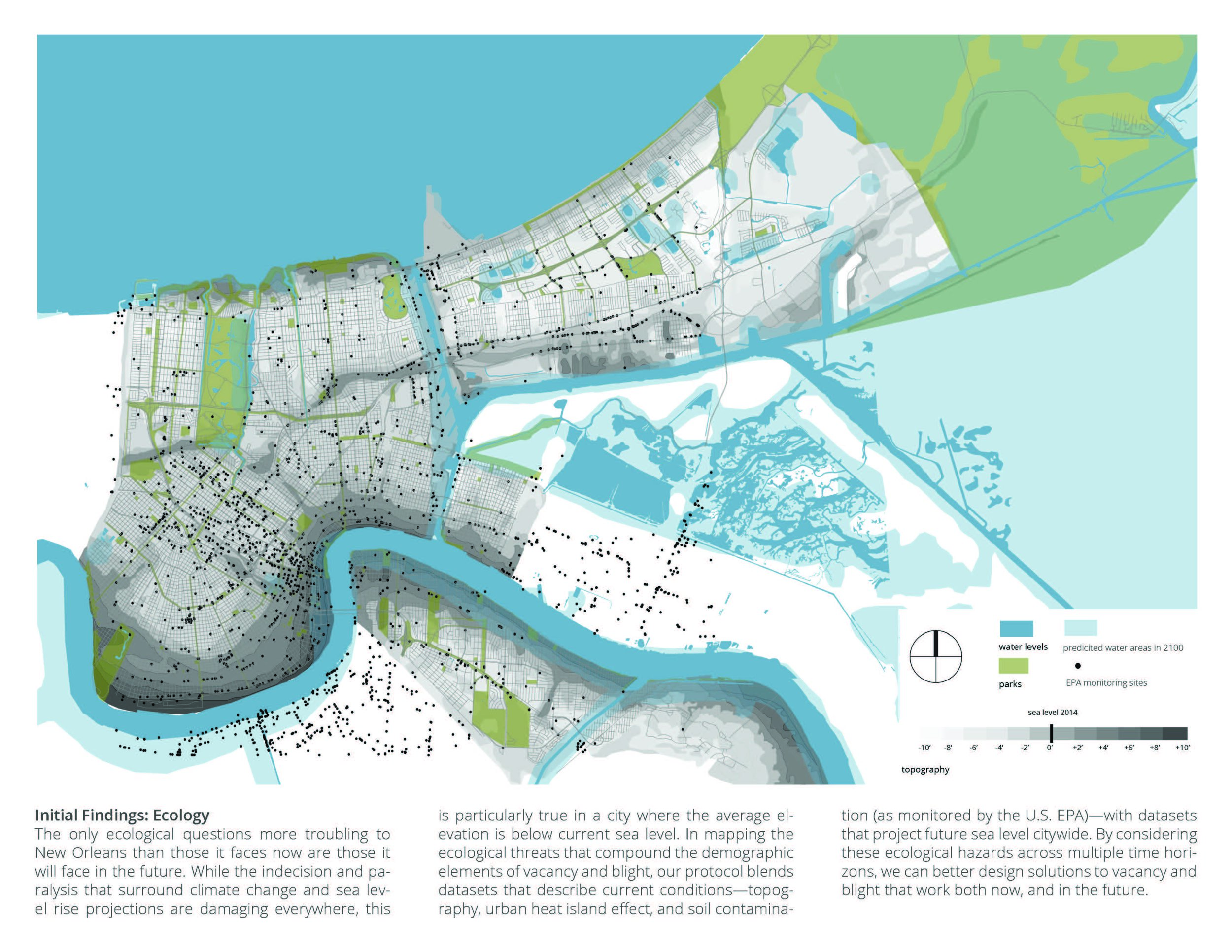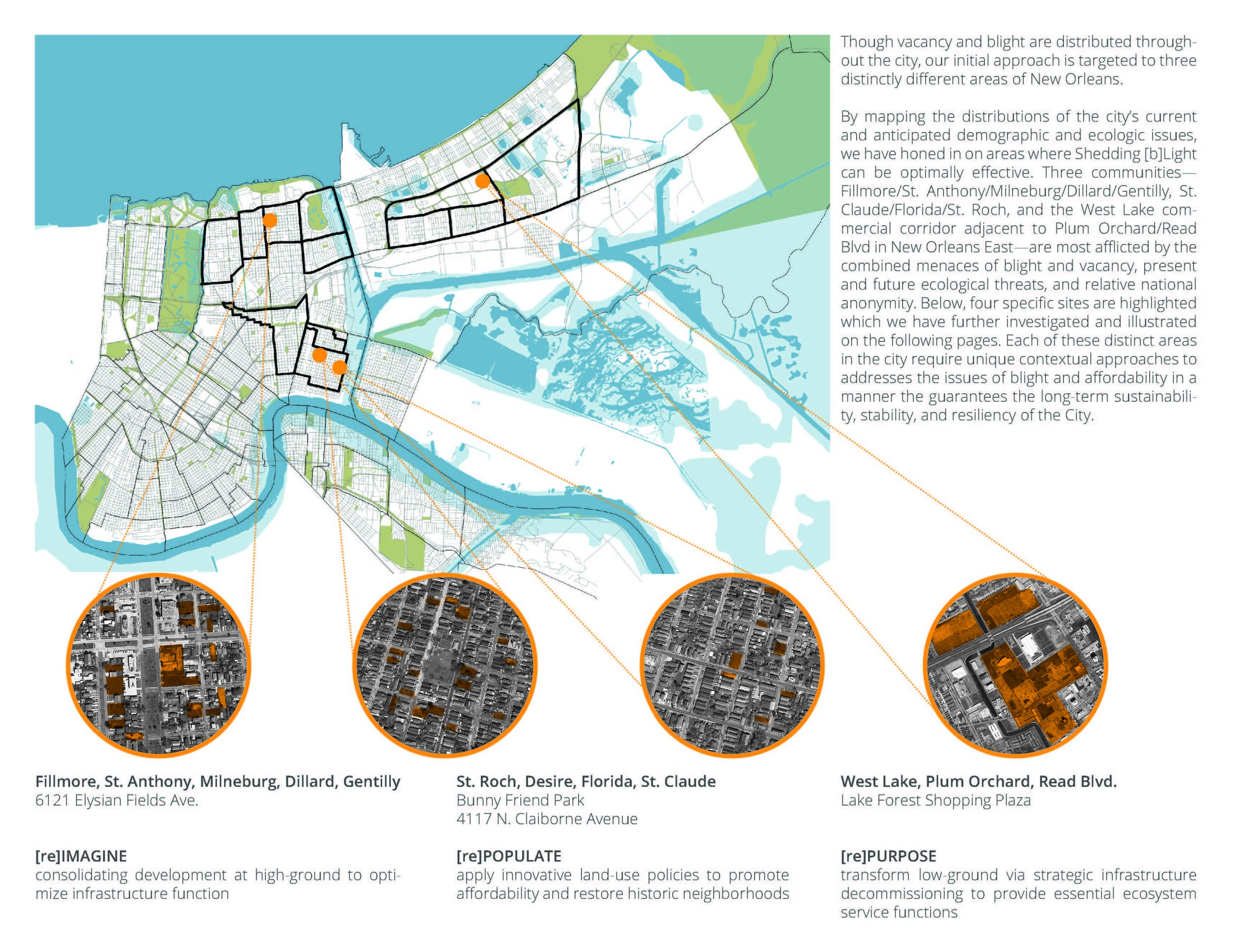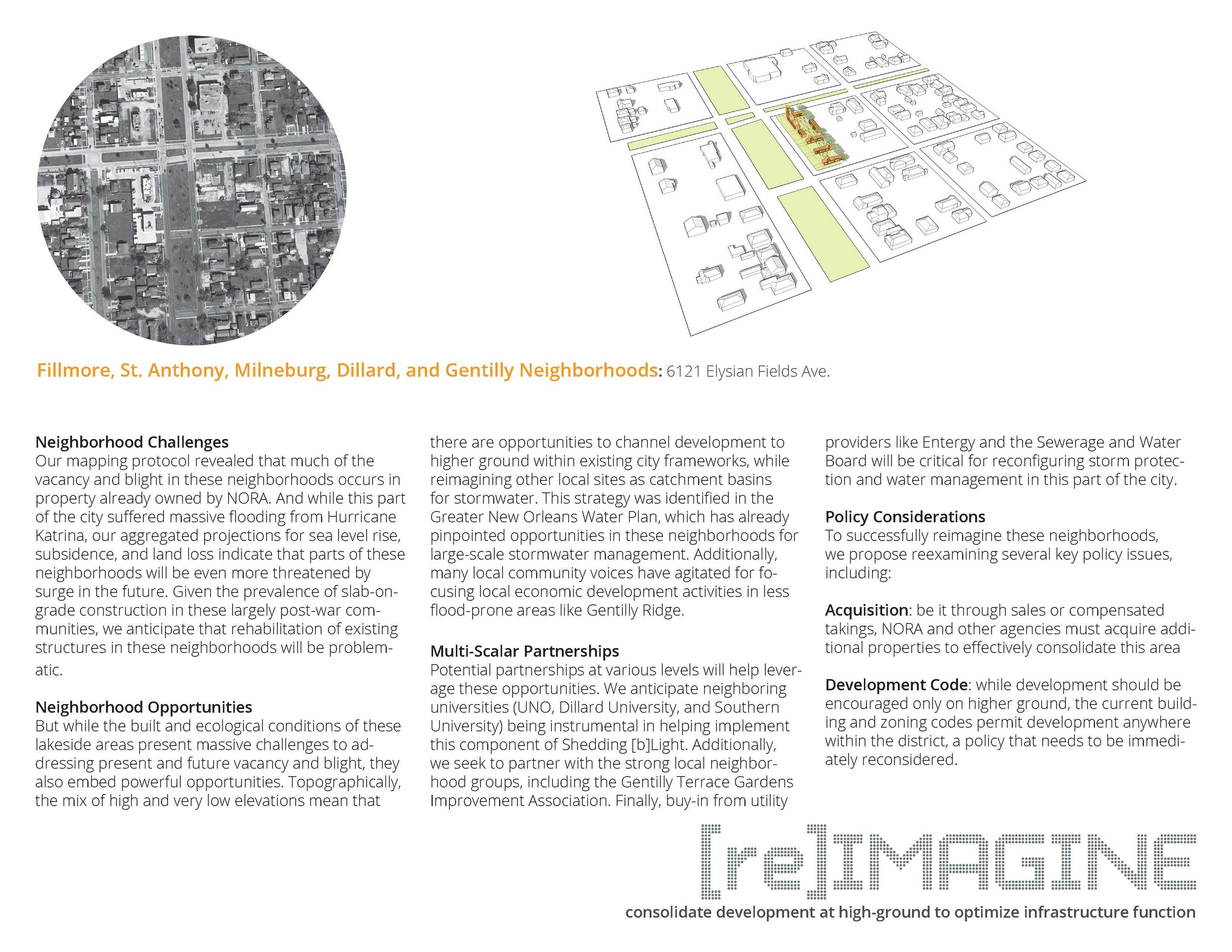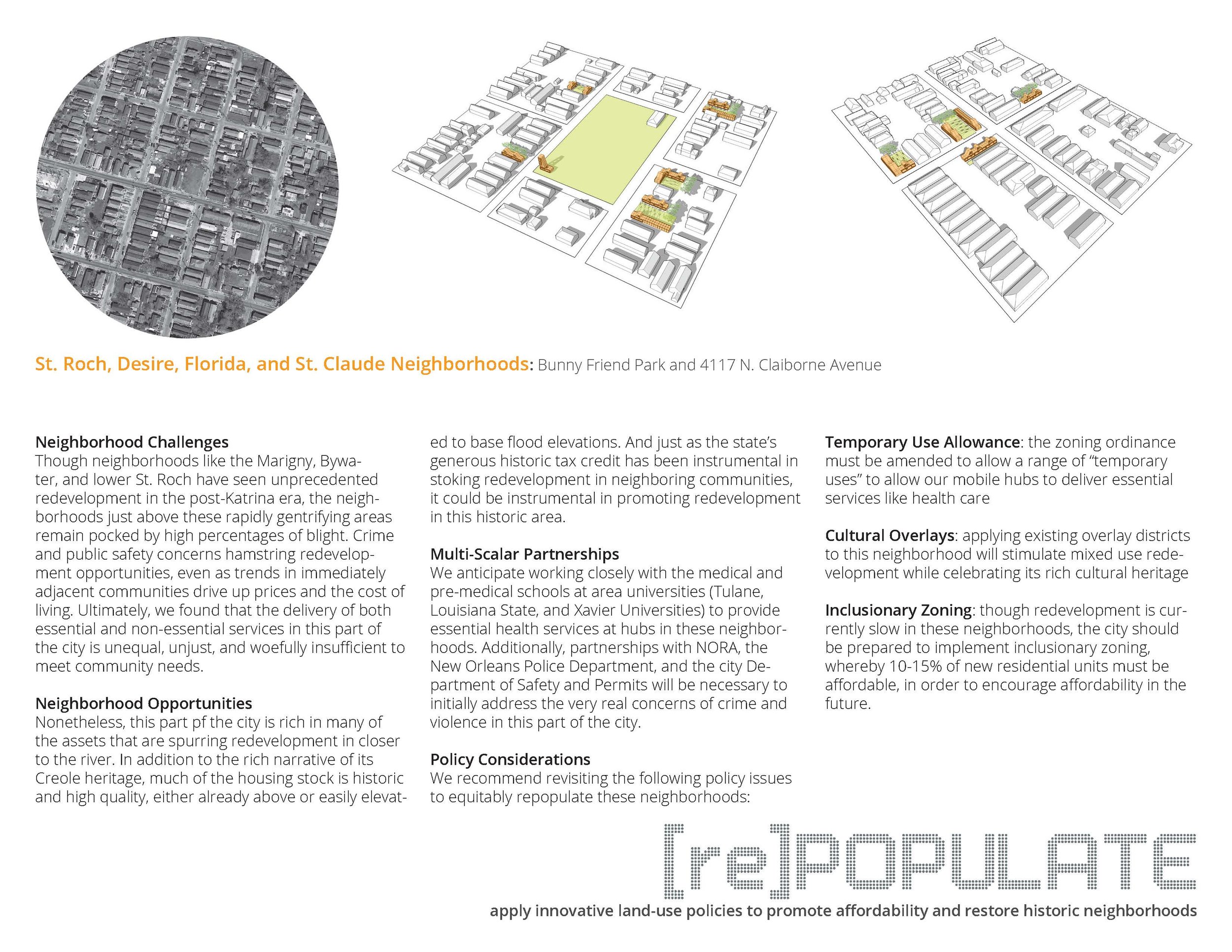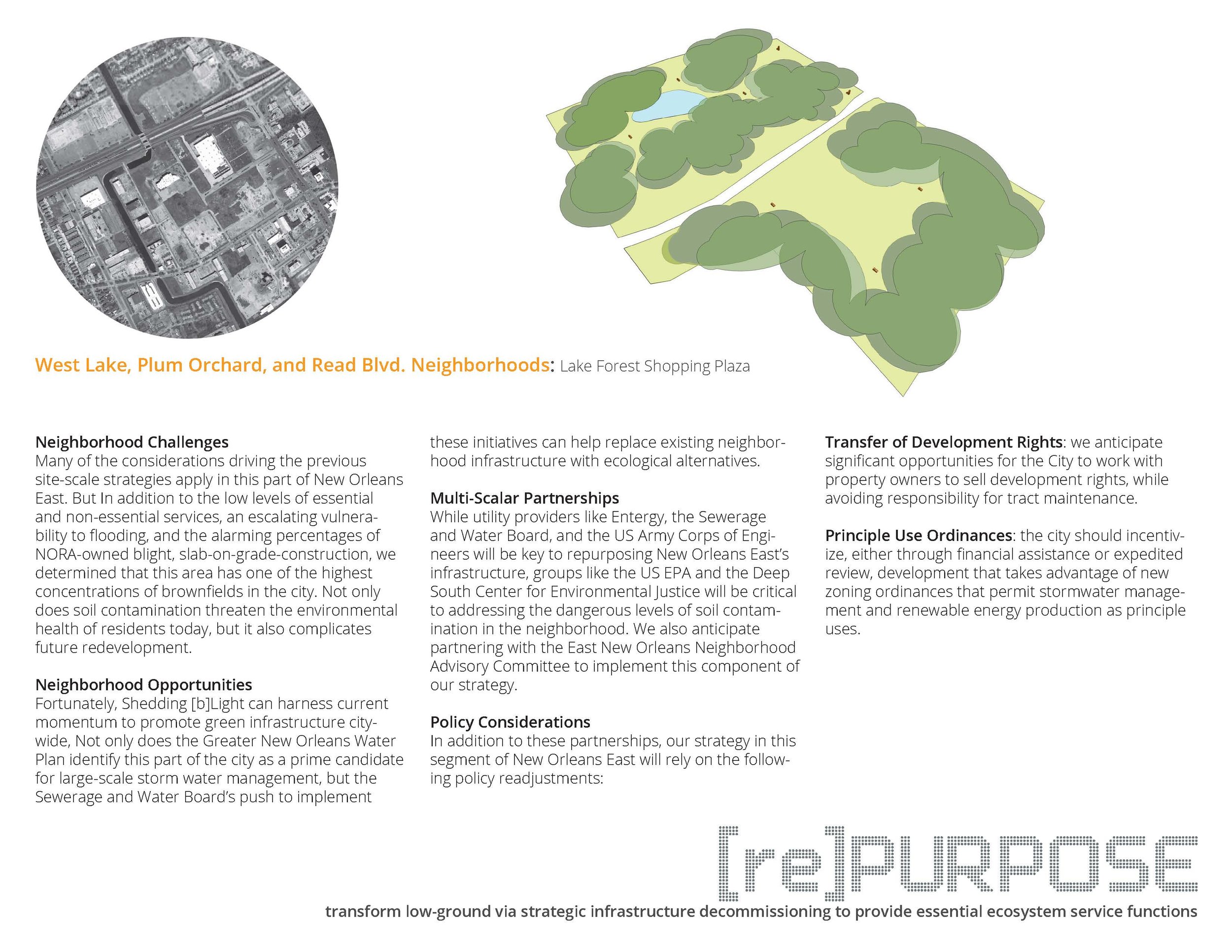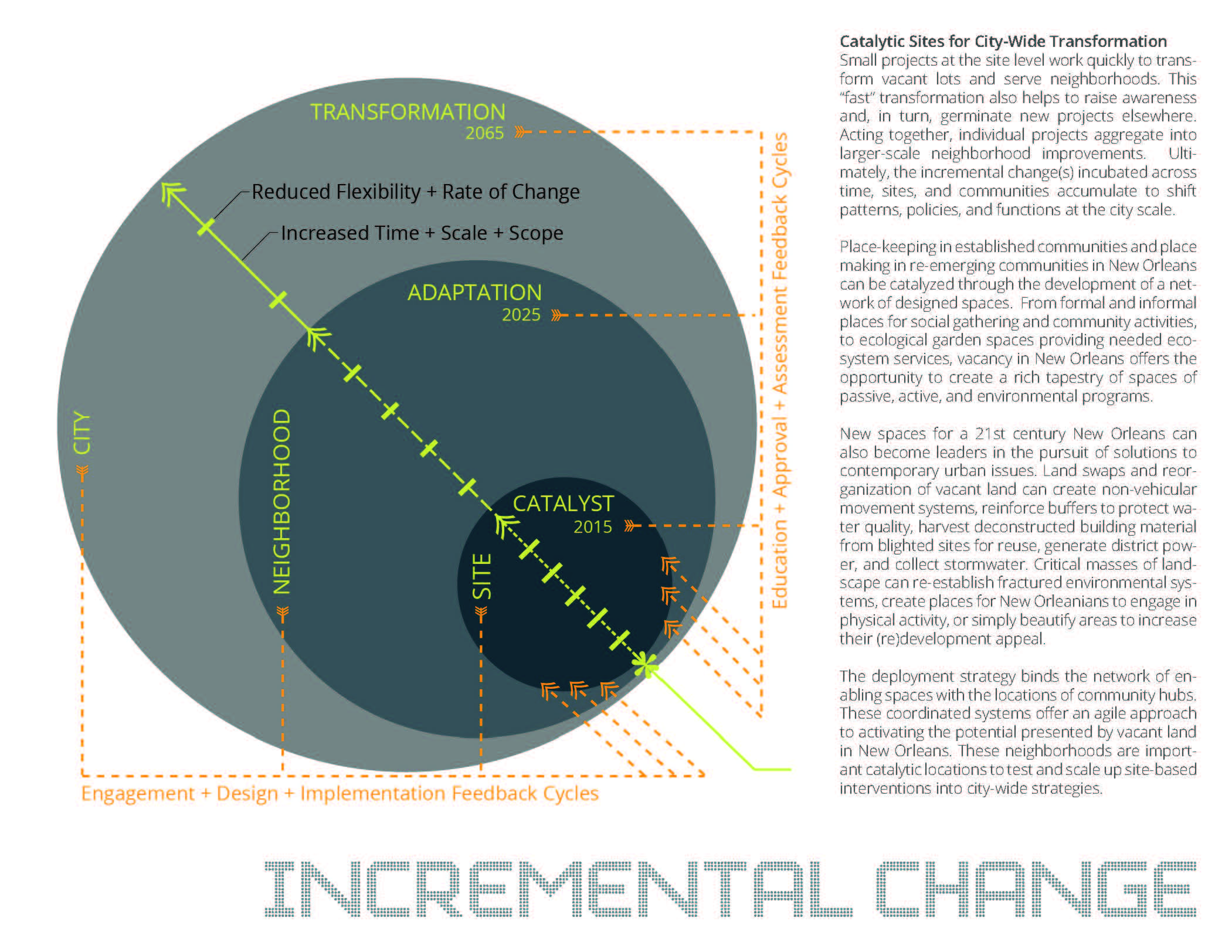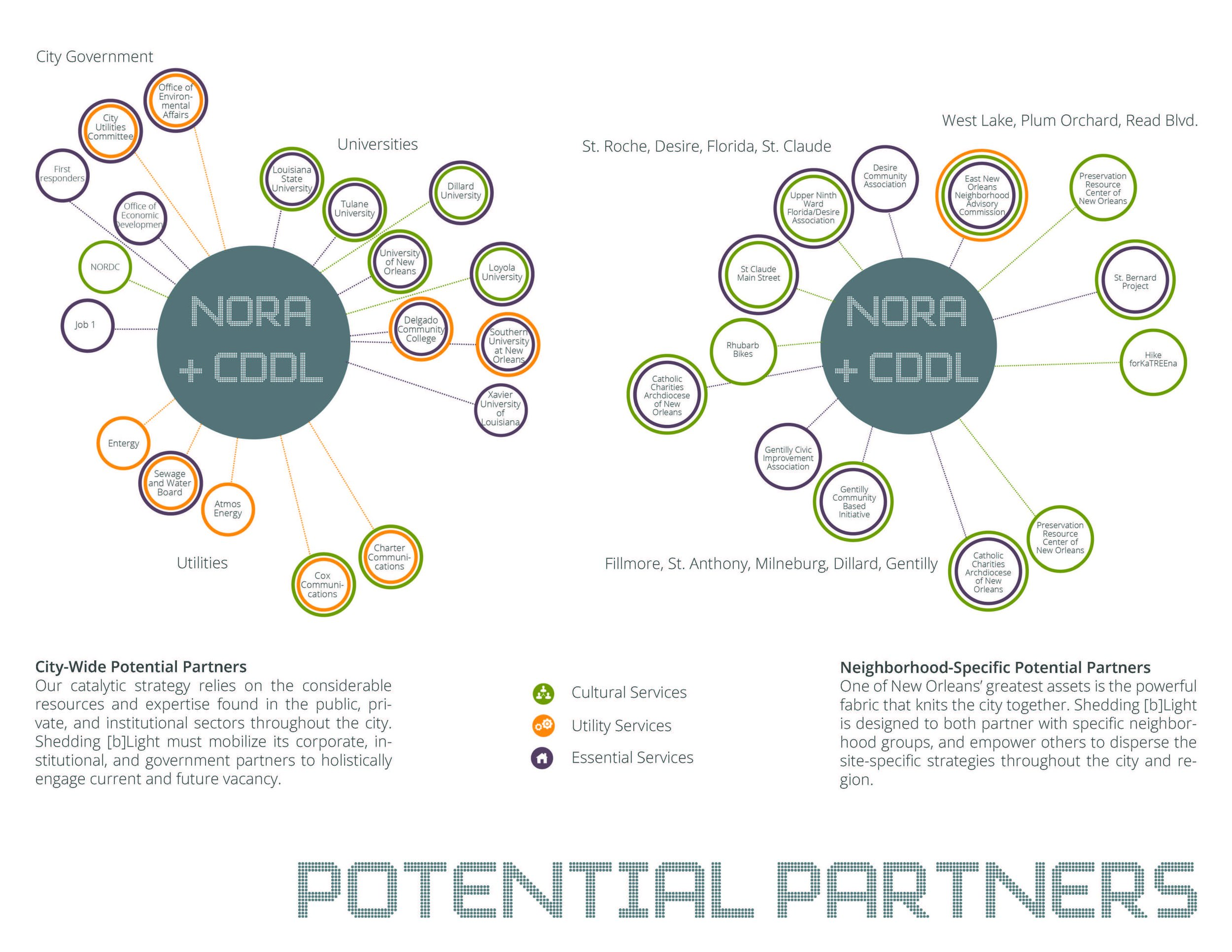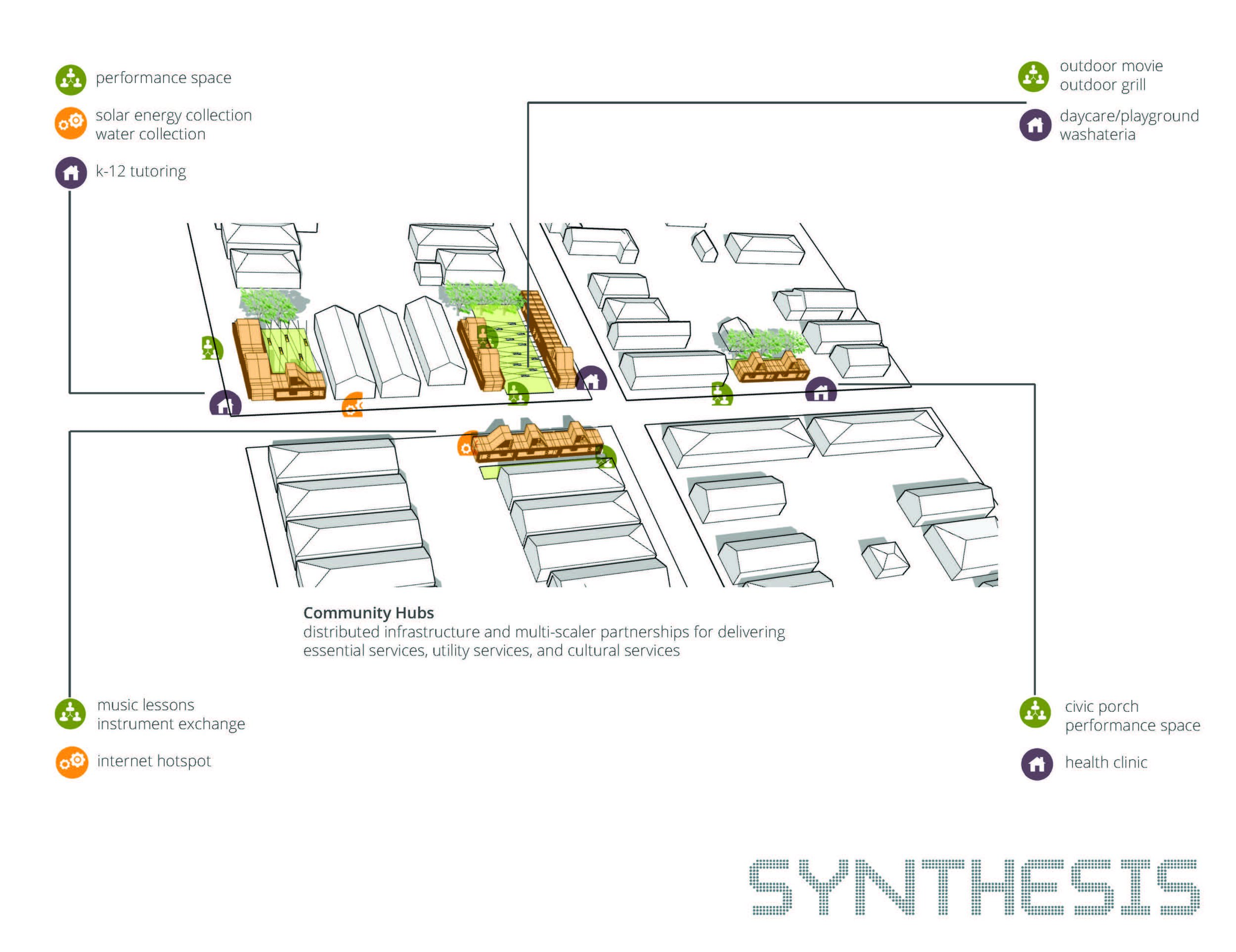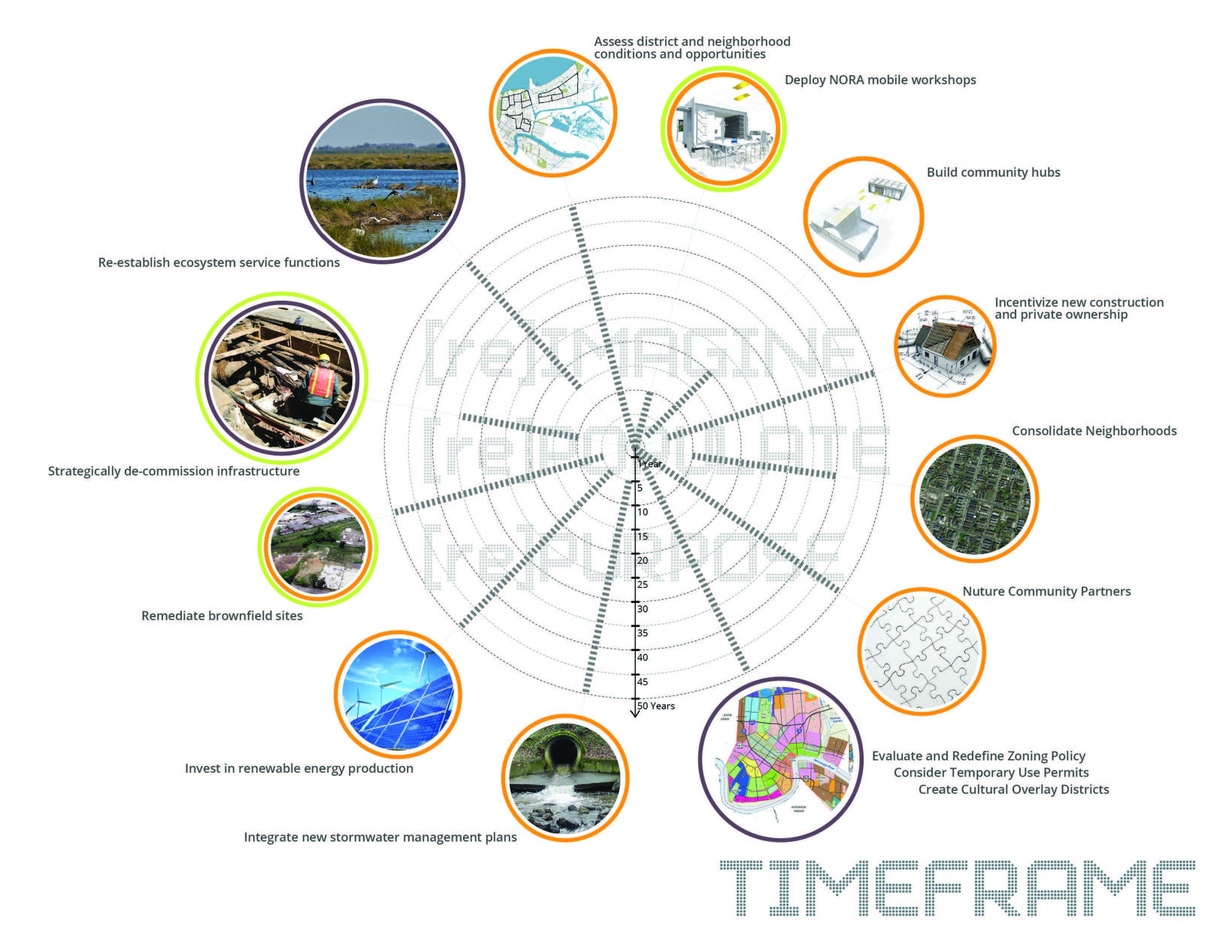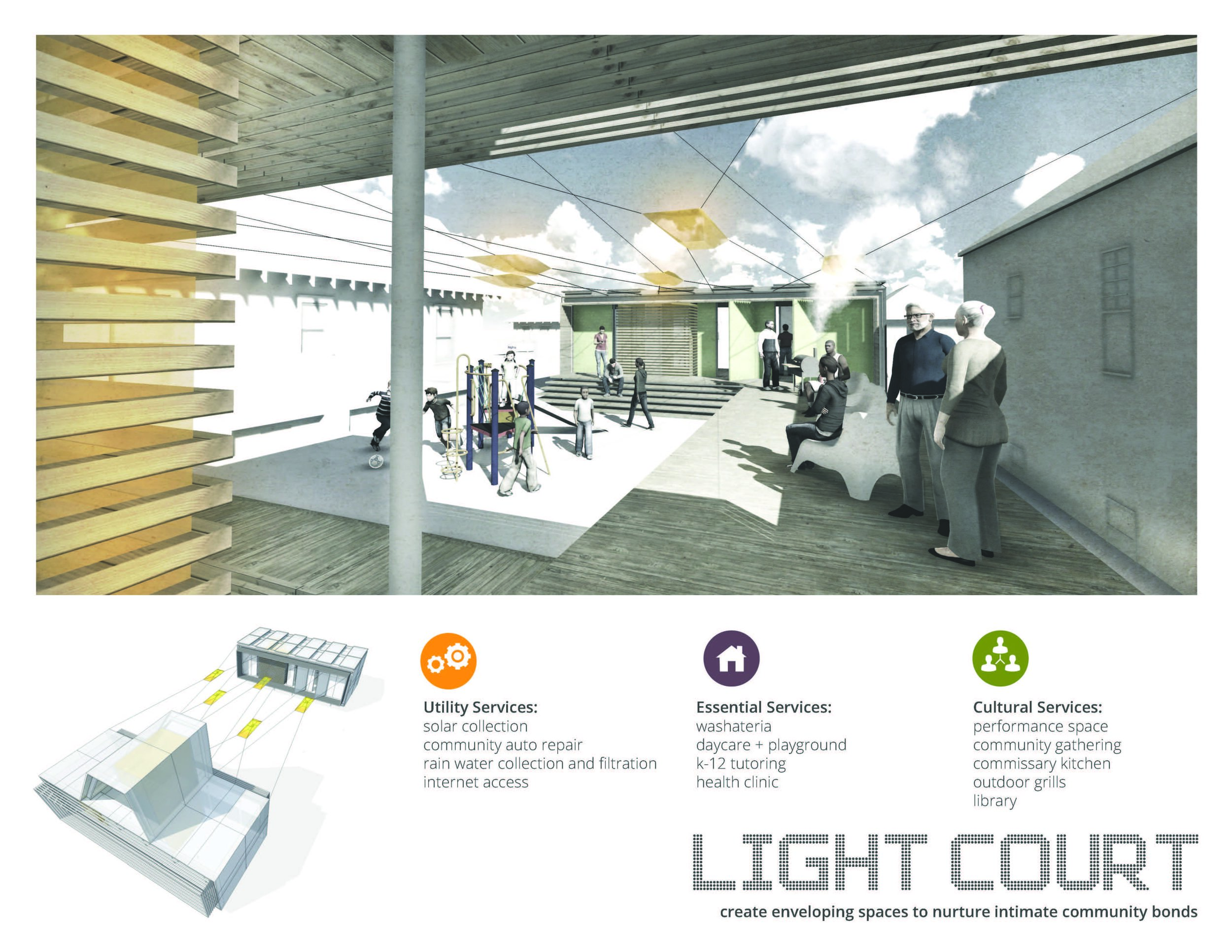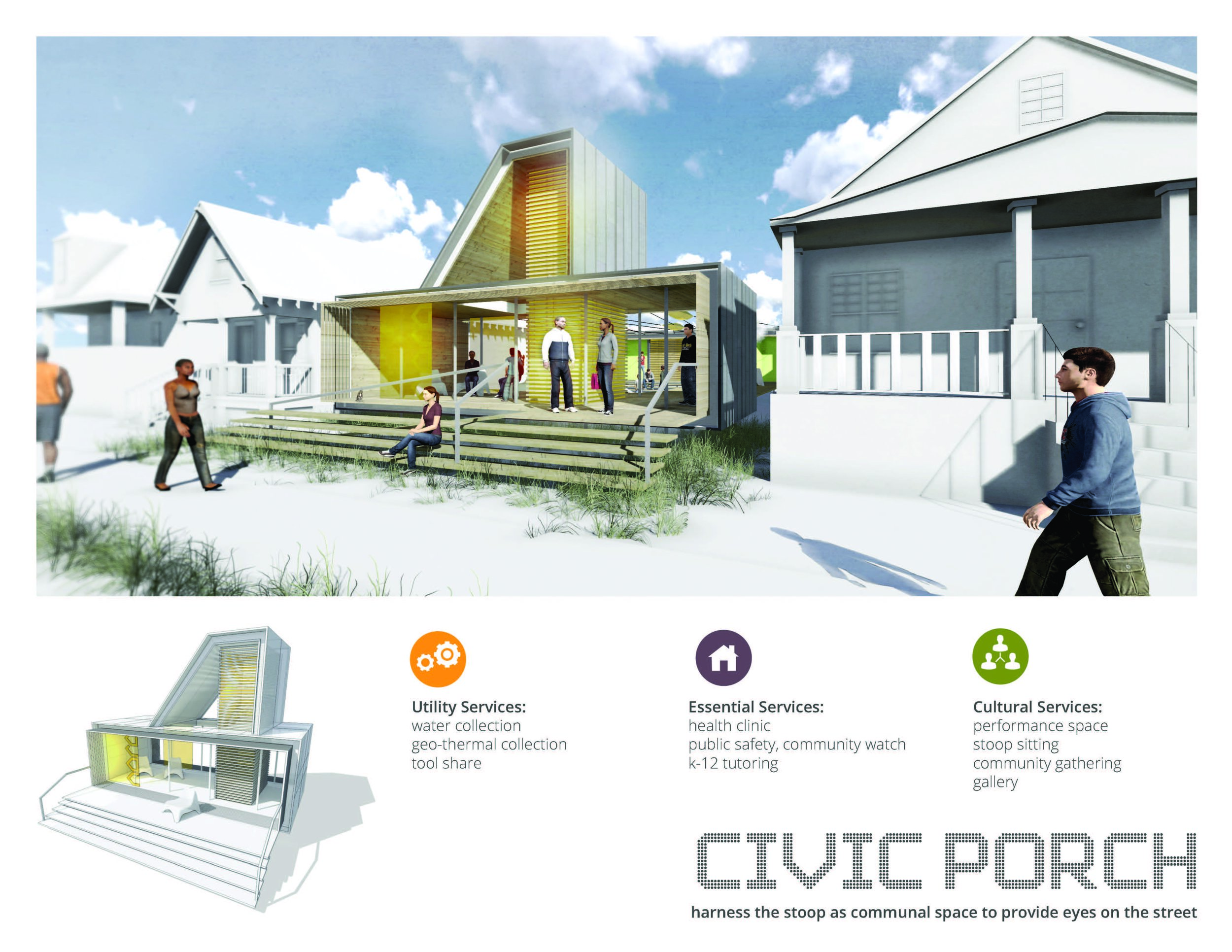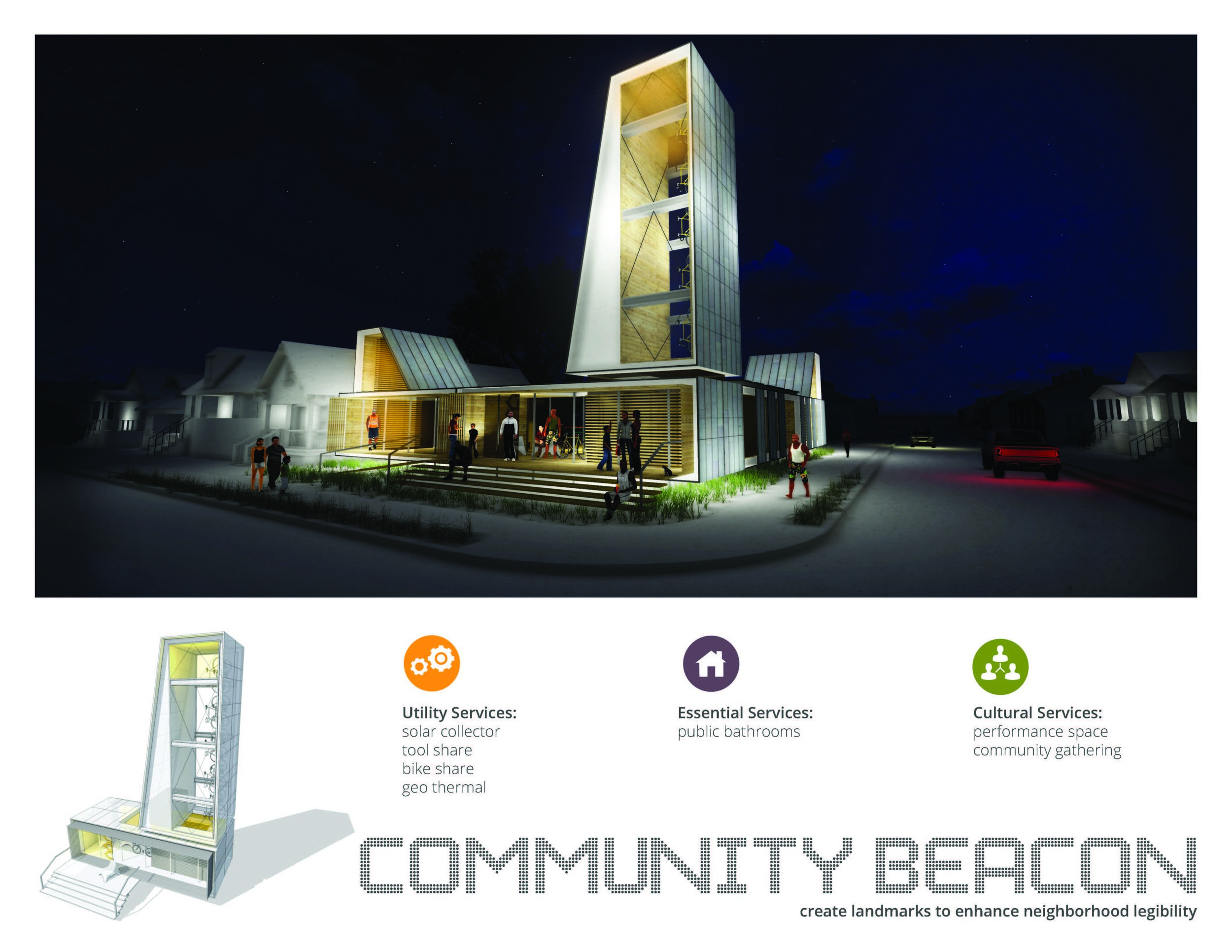Project Summary
Shedding [b]Light was a multidisciplinary, urban analysis, and planning proposal containing adaptive design and policy strategies to reuse vacant land in New Orleans, Louisiana. The purpose of the project was to guide the transformation of abandoned landscapes and properties into resources for the current and future city. The plan uses a scalable, incremental framework that addresses many dimensions of vacancy in New Orleans. It proposes a system of community hubs that are rapidly deployed, first in target neighborhoods, and then strategically sited in vacancy contexts throughout the city.
Vacancy in New Orleans has many dimensions, each occurring at different physical and chronological scales. Programmatically, each community hub is equipped to deliver a range of socially, culturally, and ecologically essential services. From health clinics to solar arrays, laundromats to job training sites, each hub’s programming fills existing gaps in community function and grows civic capacity to respond to anticipated demographic and ecological shifts throughout New Orleans.
Central to the plan’s adaptability is an emphasis on porches and light. Familiar and inexpensive, modular porches replace vacancy with a unified sidewalk edge or communal gathering spot, swapping out the forbidding tangle of trash and weeds for a vernacular public realm. Corresponding adjustments to city ordinances and land use regulations will provide the regulatory support to transform the community hubs from isolated oases in the city’s fabric of vacancy to a catalytic network of flexible, community defined spaces for New Orleans’ next 50 years...and beyond.
Shedding [b]Light was developed by a diverse team with expertise in landscape architecture, architecture, urban design, urban planning, policy, and community development. With a focus on rigorous analyses and stakeholder engagement best practices, the team forecast changes in density, demand, and climate over the next half-century in New Orleans, and tackled the social, economic, and ecological challenges underlying reuse of the most prevalent types of vacant land in the city. The project team produced implementable, replicable solutions that agencies can apply to specific vacancy and abandonment issues citywide, and can help catalyze change in shrinking cities around the world.
Awards
Award of Excellence: Analysis & Planning
ASLA North Carolina | 2015


